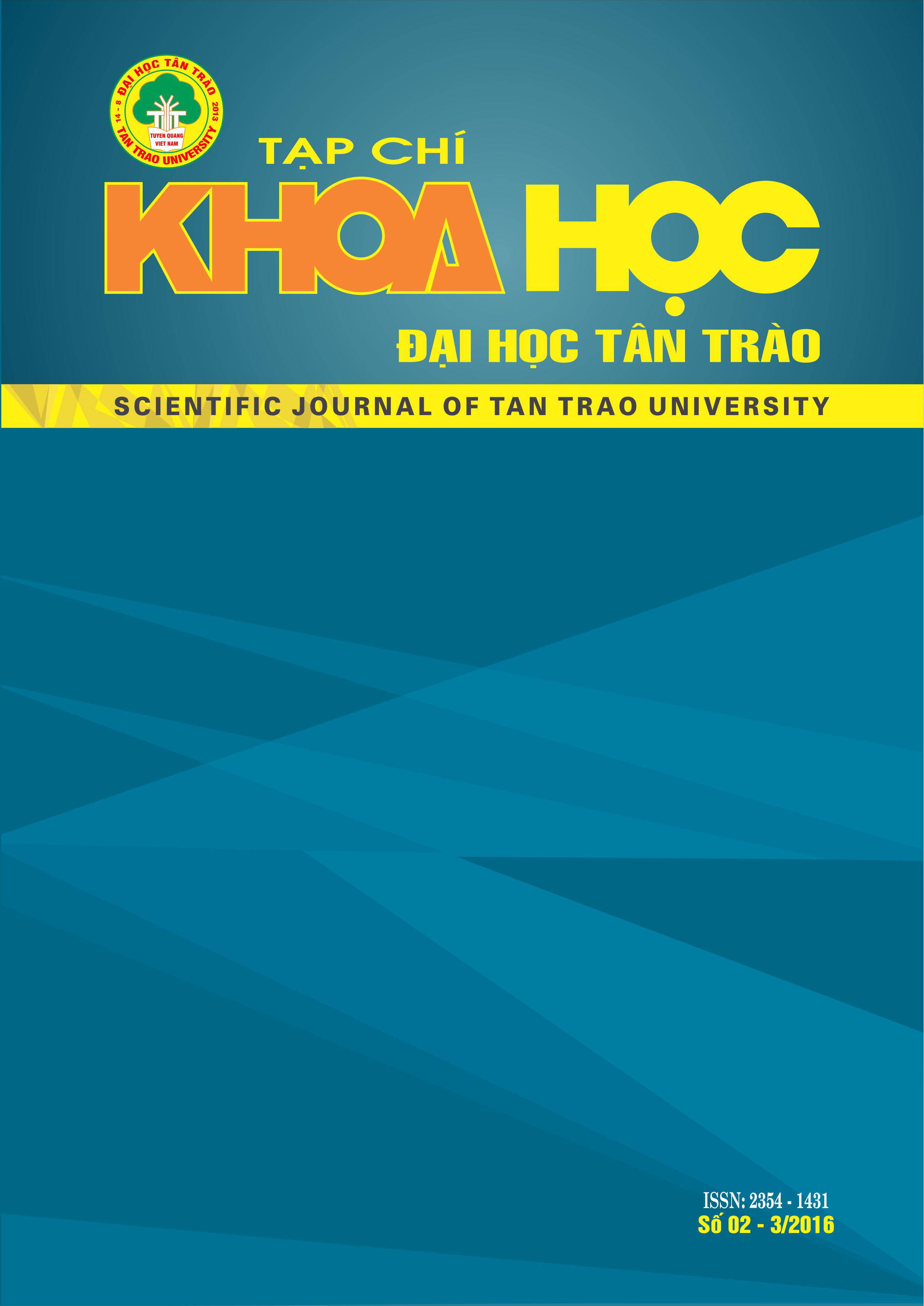Notes on development of green agriculture, benefits, perception and options
DOI:
https://doi.org/10.51453/2354-1431/2016/98Keywords:
agricultural reality, green agriculture, green revolution, food security.Abstract
In order to compare meaning of green agriculture, realities of green agriculture are analysed between benefits of green agricultre and the reality of current traditional agriculture. This paper based on publilshed document to prove benefits of green agriculture as well as conjunctions between developing green agriculture with issues of economic, ecology, environment and welfare. Green agriculture will be successful if it not only ensures of food security but also creates ecology which is healthy and environment friendly. The article also mentions some petitions about policies in national
and global scope in developing green agriculture. Beside understanding about benefits of green agriculture, it needs to have policies that are relevant to practice in order to propose suitable options in developing green agriculture as its right meaning.
Downloads
References
1. Burney JA, Davis SJ, Lobell D.B. (2010), Greenhouse gas mitigation by agricultural intensification. Proc Natl Acad Sci USA. 107:12052-12057.
2. FAO and ILO (2009), “Safety and Health”, available at FAOSTAT, 2004: Food and Agriculture Organization of the United Nations, Statistical Databases, Online at http://faostat.fao.org.
3. Fan S., Hazell P. (2001), Returns to public investments in the less-favored areas of India and China. Am J. Agric. Econ. 83:1217–1222.
4. Gereffi G., Humphrey J., Sturgeon T. (2005), “The Governance of Global Value Chains” Review of International Political Economy” 12: 78-104.
5. Hazell P. (2003), In: Agricultural Research and Poverty Reduction: Some Issues and Evidence. Mathur S, Pachico D, editors. Cali, Colombia: Centro Internacional de Agricultura Tropical (CIAT). pp. 43–58.
6. Hazell P. (2010), In: Handbook of Agricultural Economics. Pingali P, Evenson R, editors. Amsterdam: Elsevier. pp. 3469–3530.
7. Irz X., Lin L., Thirtle C., Wiggins S. (2001), “Agricultural Growth and Poverty Alleviation” Development Policy Review 19 (4): 449-466.
8. Jarvis A., Varma A., Ram J. (2011), “Assessing green jobs potential in developing countries, A practitioner’s guide” ILO Geneva.
9. Khuất Đăng Long (2013), Về sinh vật biến đổi gen, nhận thức về lợi ích, những nguy cơ và rủi ro của chúng. Tap chi Sinh hoc, 35(4): 392-416.
10. Millennium Ecosystem Assessment . Ecosystems and Human Well-Being: Current State and Trends. Washington, DC: Millennium Ecosystem Assessment; 2005.
11. Pingali P.L., Rosegrant M.W.(1994), Confronting the Environmental Consequences of the Green Revolution in Asia. Washington, DC: International Food Policy Research Institute.
12. Pingali P. (2010), In: Handbook of Agricultural Economics. Pingali P, Evenson R, editors. Amsterdam: Elsevier; pp. 3867-3894.
13. Pingali P. L.( 2012), Green Revolution: Impacts, limits, and the path ahead. Proc Natl Acad Sci USA. Jul 31; 109(31): 12302-12308. doi: 10.1073/pnas.0912953109
14. Steinfeld H., Gerber P., Wassenaar T., Castel V., Rosales M., de Haan C. (2006). Livestock's long shadow. FAO, Rome 2006.
15. Strietska-Ilina O., Hofmann C., Duran Haro M., Shinzoung J. (2011), “Skills for Green Jobs, A Global View.” ILO, Geneva UNEP 2011 “Towards a Green Economy-Agriculture”.
16. The World Bank 2010 World Development Report “Development and Climate Change”.
17. UNEP 2011 “Towards a Green Economy.
18. http://nongnghiep.vn/phat-trien-nong-nghiep-xanh-post118228.html (truy cập 11.xii.2015)
19. http://vnexpress.net/tin-tuc/cong-dong/israel-voi-mo-hinh-nong-nghiep-xanh-ly-tuong 2223089.html (truy cập 11.xii.2015).
20. http://www.dairyvietnam.com/vn/Hoat-dong-khac/Phat-trien-Nong-nghiep-VN-Nhin-tu Israel.html (truy cập 11.xii.2015).
21. http://tailieu.ttbd.gov.vn:8080/index.php/tai-lieu/tai-lieu-bien-tap/item/94-kinh-te-xanh trong-nong-nghiep-viet-nam (truy cập 11.xii.2015).
Downloads
Published
How to Cite
Issue
Section
License

This work is licensed under a Creative Commons Attribution-ShareAlike 4.0 International License.
All articles published in SJTTU are licensed under a Creative Commons Attribution-ShareAlike 4.0 International (CC BY-SA) license. This means anyone is free to copy, transform, or redistribute articles for any lawful purpose in any medium, provided they give appropriate attribution to the original author(s) and SJTTU, link to the license, indicate if changes were made, and redistribute any derivative work under the same license.
Copyright on articles is retained by the respective author(s), without restrictions. A non-exclusive license is granted to SJTTU to publish the article and identify itself as its original publisher, along with the commercial right to include the article in a hardcopy issue for sale to libraries and individuals.
Although the conditions of the CC BY-SA license don't apply to authors (as the copyright holder of your article, you have no restrictions on your rights), by submitting to SJTTU, authors recognize the rights of readers, and must grant any third party the right to use their article to the extent provided by the license.


